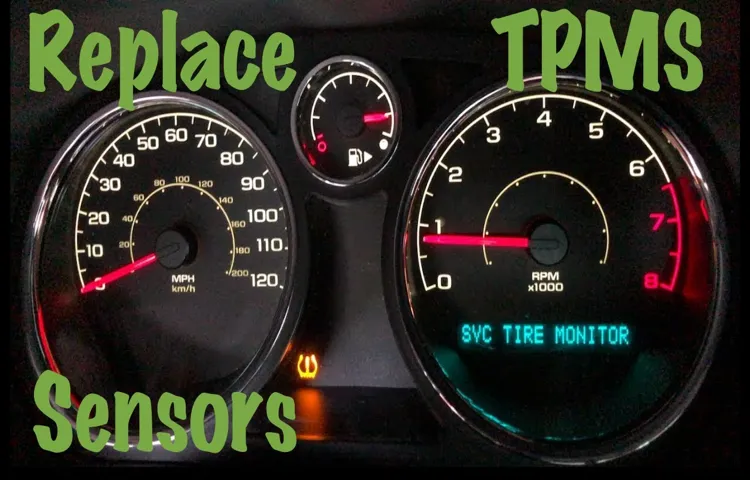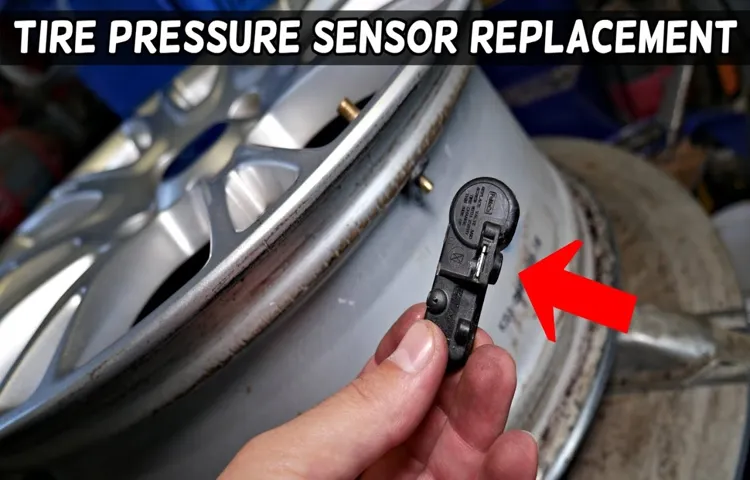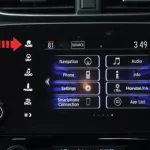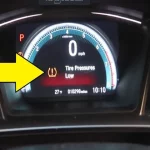Have you ever had your tire sensors light up after getting your tires rotated? Don’t panic, this is a common issue that can be easily fixed by reprogramming your tire sensors. Getting your tires rotated is an essential part of proper tire maintenance that everyone should perform regularly. It helps improve the lifespan of your tires, ensures better handling, and minimizes wear and tear.
However, repositioning your tires can confuse your vehicle’s sensor system and cause it to send off false readings. In this blog, we’ll discuss why your tire sensors need reprogramming after a tire rotation and how to do it. So, sit back and read on to know more about the importance of reprogramming your tire sensors!
Table of Contents
Understanding Tire Sensors
If you recently rotated your tires, you may need to reprogram your tire sensors to ensure they are still functioning correctly. Tire sensors, also known as tire pressure monitoring systems (TPMS), are an essential part of your vehicle’s safety system. These sensors constantly monitor the pressure and temperature of your tires and alert you when something is wrong.
However, if you have rotated your tires, the sensors may not be able to communicate with the correct tires, leading to false alerts or a complete lack of monitoring. To reprogram your tire sensors, you will need to consult your vehicle’s user manual or take it to a professional. In some cases, you may be able to do it yourself by following a few simple steps, which typically involve pressing and holding a button on the dashboard while letting air out of each tire in a specific order.
Don’t neglect reprogramming your tire sensors after a tire rotation, as it can have serious consequences for your safety on the road.
What are tire sensors and how do they work?
Tire sensors are devices that are installed in tires to monitor their pressure and temperature. They work by transmitting data to a receiver in the car, which alerts the driver if there is a problem with the tire. There are two types of tire sensors: direct and indirect.
Direct sensors are installed inside the tire and measure pressure using a pressure transducer. Indirect sensors use the car’s anti-lock brake system to measure the rotation of each wheel. If one wheel is rotating slower than the others, it indicates that the tire is underinflated.
Some sensors are also capable of detecting leaks or punctures in the tire and can alert the driver to potential problems before they cause a blowout. Properly functioning tire sensors can help prevent accidents, save fuel by keeping tires at optimal pressure, and extend the life of the tire. It’s important to regularly check and maintain tire sensors to ensure they are working properly.

Why do tire sensors need to be reprogrammed after rotation?
Tire sensors are an important safety feature in modern vehicles, and they play a critical role in keeping us safe on the road. One common question that car owners ask is why tire sensors need to be reprogrammed after rotation. The answer is that tire rotation changes the location of each tire on the car, and this can affect the sensor’s ability to accurately measure tire pressure.
When a tire is moved from one location to another, it can sometimes trigger a false reading in the tire pressure monitoring system. This is because each tire sensor is programmed to monitor a specific location on the car, and if that location changes, it can cause the sensor to malfunction. To prevent this from happening, it’s important to have your tire sensors reprogrammed after each tire rotation.
This ensures that they are calibrated correctly and can accurately detect any changes in tire pressure. While it may seem like a minor inconvenience, taking the time to have your tire sensors reprogrammed can help keep you and your passengers safe on the road. So next time you’re getting your tires rotated, make sure to ask your mechanic about reprogramming your tire sensors.
Steps to Reprogram Tire Sensors after Rotation
If you’ve just rotated your tires, you may need to reprogram your tire sensors to ensure that they continue to function accurately. Most newer vehicles have sensors that monitor tire pressure and notify the driver when the pressure is low. To reprogram the sensors after a tire rotation, first, you need to make sure that all tires are inflated to the correct pressure.
Then, locate the tire sensor reset button which is usually found in the glove compartment or trunk. Press and hold the button for a few seconds until you see a notification that the sensors have been reset. Finally, test the sensors to make sure they are working correctly by driving for a few miles.
By following these simple steps, you can quickly reprogram your tire sensors after a rotation and ensure that they work as intended.
Step 1: Gather Required Tools and Materials
To reprogram tire sensors after a rotation, the first step is gathering all the required tools and materials. This will ensure a smooth and efficient process when reprogramming the sensors. The necessary tools include a TPMS tool or a diagnostic scan tool, which will allow you to communicate with the tire pressure monitoring system.
Additionally, you will need the vehicle owner’s manual to locate the TPMS reset button or to learn the relearning procedure. It is also important to have access to a properly inflated air source to ensure that the tire pressure is at the recommended level before reprogramming the sensors. By having these tools and materials ready, you can confidently and easily reprogram the tire sensors, saving you time and frustration down the road.
So, before starting the reprogramming process, gather all the necessary items to get the job done right.
Step 2: Locate the Sensor Reset Button
The second step in reprogramming tire sensors after rotation is to locate the sensor reset button. This button can usually be found in the vehicle’s glove box or behind the steering wheel. Once it has been located, you will need to press and hold it until the sensor light blinks two or three times.
This will signal that the system has been reset and is ready to be reprogrammed. It is important to note that not all vehicles have a sensor reset button and some may require the use of a specialized tool to reset the sensors. Therefore, it is important to refer to the vehicle manual or seek assistance from a professional if necessary.
By following these steps, you can ensure that your tire sensors are accurately reporting your tire pressure and prevent potential safety issues while driving on the road.
Step 3: Turn on the Ignition without Starting the Engine
When it comes to maintaining your vehicle, tire rotation is an important aspect to consider. It is crucial to extend the life of your tires and maintain their performance. However, after rotation, tire sensors need to be reprogrammed.
The process is quite simple and can be done with a few easy steps. Firstly, ensure that all tires are properly inflated. Secondly, locate the reprogramming button.
It is usually located beneath the steering wheel. Press and hold the button until the tire pressure light blinks twice. Next, turn on the ignition without starting the engine.
This is the third step. Then, press the button until the tire pressure light blinks three times. Finally, turn off the ignition and start the engine after a few minutes.
The tire sensors should now be reprogrammed, and the tire pressure light should turn off. By following these steps, you will save yourself from avoidable expenses and maintain the safety of your vehicle.
Step 4: Press the Sensor Reset Button
When it comes to tire maintenance, rotating your tires regularly is essential to ensure even wear and prolong their lifespan. However, rotating tires also means reprogramming the tire sensors, which can get a bit tricky. After rotating, you must press the sensor reset button to reprogram the sensors properly.
This button is usually found inside the glove compartment or under the driver’s side dashboard. Pressing the reset button should be done while the car is in the ignition and turned to the “on” position. The process may vary among car models, so it’s best to refer to your car’s manual to ensure you’re doing it right.
By following these steps, you can reprogram your tire sensors successfully and enjoy a safe, smooth ride.
Step 5: Inflate the Tires to the Correct Pressure
After successfully rotating your tires, it’s crucial to reprogram the tire sensors to ensure accurate readings. Step five of this process involves inflating the tires to the correct pressure. This is important because improperly inflated tires can lead to decreased fuel efficiency, decreased tire life, and compromised safety.
The recommended pressure can be found in your vehicle’s owner manual or on the inside of the driver’s door. It’s essential to inflate all tires to the same pressure level. A tire gauge may be necessary to ensure the proper pressure is reached.
Once the tires are inflated to the correct pressure, the tire sensors can be reset either by a professional mechanic or using the steps provided in your vehicle’s owner manual. Overall, properly inflating your tires is a crucial step in maintaining your vehicle’s safety and performance.
Common Mistakes When Reprogramming Tire Sensors
Reprogramming tire sensors after rotation is a crucial maintenance step that ensures optimal performance and safety while driving. However, it’s essential to know what not to do during the process. One of the most common mistakes is not turning on the vehicle’s ignition before initiating the reprogramming process.
When the ignition is off, the car’s computer memory also shuts down, making it impossible to communicate with the sensors. Another mistake is forgetting to place the tire sensors in the correct position. A sensor installed on the wrong wheel cannot provide accurate data about tire pressure, which can be dangerous.
Lastly, it is crucial to use the right reprogramming tools. Using incompatible tools or techniques can lead to faulty readings or a malfunctioning sensor system. Therefore, it is always best to consult a professional to avoid these mistakes and ensure that the reprogramming process is done correctly.
Mistake 1: Not Reading the User Manual Carefully
Reprogramming tire sensors can be a challenging task, especially if you are not familiar with the process. One of the most common mistakes that people make is not reading the user manual carefully. The user manual is a crucial source of information that provides detailed instructions on how to reprogram tire sensors.
It contains step-by-step guidance on how to use the reprogramming tool, how to access the sensor’s ID code, how to calibrate the sensors, and more. By not reading the user manual thoroughly, you might miss critical information that could lead to errors or inefficiencies in the reprogramming process. To avoid this mistake, take your time to read and follow the instructions provided in the user manual.
This will help you get the most out of your tire sensors and keep your vehicle running smoothly.
Mistake 2: Forgetting to Inflate Tires to the Correct Pressure
When reprogramming your tire sensors, it’s important not to make common mistakes that can negatively impact your driving experience. One such mistake is forgetting to inflate your tires to the correct pressure. Not only does this affect the accuracy of the tire sensor readings, but it can also lead to poor handling, decreased fuel efficiency, and even premature tire wear.
It’s important to regularly check your tire pressure and inflate them to the recommended PSI, which can usually be found in your vehicle’s manual or on the tire itself. By doing so, you’ll not only improve the performance of your vehicle but also ensure a safer driving experience. Don’t let this common mistake catch you off guard – take the time to properly inflate your tires before reprogramming your sensor.
Mistake 3: Not Finding the Sensor Reset Button
When it comes to reprogramming tire sensors, there are common mistakes that people make. One of these mistakes is not finding the sensor reset button. It’s important to know where this button is located because it is what resets the sensors when new tires are installed.
Without resetting the sensors, they will not be able to function properly, and the tire pressure monitoring system (TPMS) won’t work correctly. The sensor reset button is usually located in the glove box, under the steering wheel, or on the dashboard. It’s important to consult the vehicle owner’s manual to locate the reset button.
By finding and using the reset button, you can ensure that your TPMS is working correctly and your tires are properly inflated. This can save you money on gas and wear and tear on your tires, and can also improve your overall driving safety.
Mistake 4: Not Resetting the Sensors after Rotation
When reprogramming tire sensors, it’s essential to reset them after rotation. This is one of the most common mistakes that car owners make, and it can be quite costly to fix. Failure to reset sensors can lead to incorrect readings, which can cause major issues when driving.
It’s important to ensure that the sensors are set to the correct position and that they are reading the right tire pressure. By resetting the sensors, you can ensure that your vehicle’s tire system is working correctly and safely. Don’t let a simple mistake like this cause you major headaches, always double-check to ensure that the sensors are reset after a tire rotation.
Conclusion and Final Thoughts
In conclusion, reprogramming tire sensors after rotation might sound like a tedious task, but it’s a simple process that can save you from the hassle of inaccurate readings and potential safety issues. It’s like giving your tires a new language to communicate with your car’s system. So, just remember to take a few minutes to indulge your vehicle with this linguistic update, and you’ll be back on the road with a smoother ride and a smarter car.
Happy driving!”
Summing Up the Reprogramming Process
Reprogramming tire sensors can be a bit tricky, especially if you’re not familiar with the procedure. As simple as it may seem, there are some common mistakes that people make during the process. Firstly, not verifying the compatibility of the sensor with the vehicle can be a significant blunder.
Secondly, not resetting or initializing the sensors after installing them or after replacing the tires can lead to inaccurate readings. Thirdly, incorrect placement of the sensors on the rim can result in inaccurate readings and, ultimately, incorrect tire pressure monitoring. Lastly, failing to follow the manufacturer’s guidelines or instructions can lead to reprogramming errors and, again, incorrect readings.
Therefore, it’s vital to take your time and ensure that each step is carefully executed. With a little patience and attention to detail, you’ll be able to reprogram your tire sensors without any problems.
Tips to Prevent Common Mistakes
When it comes to reprogramming tire sensors, there are a few common mistakes that can easily be avoided with some simple tips. One of the most common mistakes is failing to properly relearn the sensor after reprogramming it. It’s important to take the time to complete the relearning process to ensure the sensor is accurately detecting tire pressure and sending the correct data to your vehicle’s computer.
Another mistake is not using the correct sensor tool for the specific make and model of your vehicle. Each tool is designed for a specific range of vehicles, and using the wrong tool can result in incorrect data being sent to your vehicle’s computer. Lastly, always double-check your tires to ensure they are properly inflated before reprogramming the sensors.
Using the incorrect tire pressure can result in inaccurate sensor readings and affect your vehicle’s overall performance. By following these simple tips, you can easily avoid these common mistakes and ensure your tire sensors are functioning properly.
Takeaways and Final Advice
Reprogramming tire sensors can be an overwhelming experience, even for experienced mechanics. One common mistake is not verifying the correct pressure range and sensor frequency before attempting the reprogramming process. This can result in misreading, miscommunication, and even an unresponsive sensor.
Another mistake to avoid is failing to check the battery life of the sensor before reprogramming. A dead battery can prevent successful reprogramming, leading to faulty readings and a warning light on the dashboard. Finally, not following the correct reprogramming sequence or step-by-step instructions can also cause programming errors and sensor malfunction.
To avoid these common mistakes, always verify the correct pressure range and sensor frequency, check the sensor battery life, and follow the correct reprogramming sequence or instructions. With these tips in mind, reprogramming tire sensors can be a breeze.
FAQs
Why do tire sensors need to be reprogrammed after rotation?
Tire sensors need to be reprogrammed after rotation because the position of each tire has changed. The sensor readings are initially calibrated to specific tire positions, so they must be reprogrammed to ensure accurate readings.
Can I reprogram my tire sensors myself?
It depends on the type of vehicle and sensor system. Some vehicles have a self-learning system that will automatically adjust to the new tire positions, while others require a manual reprogramming process using a tool or software.
What should I do if my tire pressure monitoring system (TPMS) light comes on after a tire rotation?
If the TPMS light comes on after a tire rotation, it may be an indication that the sensors need to be reprogrammed. Consult your vehicle owner’s manual or a certified mechanic to determine the best course of action.
How often should tire sensors be reprogrammed after rotation?
It is recommended to reprogram tire sensors after every tire rotation to ensure accurate readings and prevent false alerts from the TPMS system.
Can reprogramming tire sensors after rotation affect the accuracy of the readings?
If the sensors are not reprogrammed correctly, it can affect the accuracy of the readings. It is important to follow the proper procedure for reprogramming the sensors to prevent any errors.
What is the cost of reprogramming tire sensors after rotation?
The cost of reprogramming tire sensors after rotation can vary depending on the type of vehicle and sensor system. It may be covered under warranty or may require a fee from a certified mechanic.
Can I ignore the TPMS light if it comes on after a tire rotation?
It is not recommended to ignore the TPMS light if it comes on after a tire rotation. It can be an indication of an issue with the sensors or tire pressure, which can affect the safety and performance of the vehicle.



